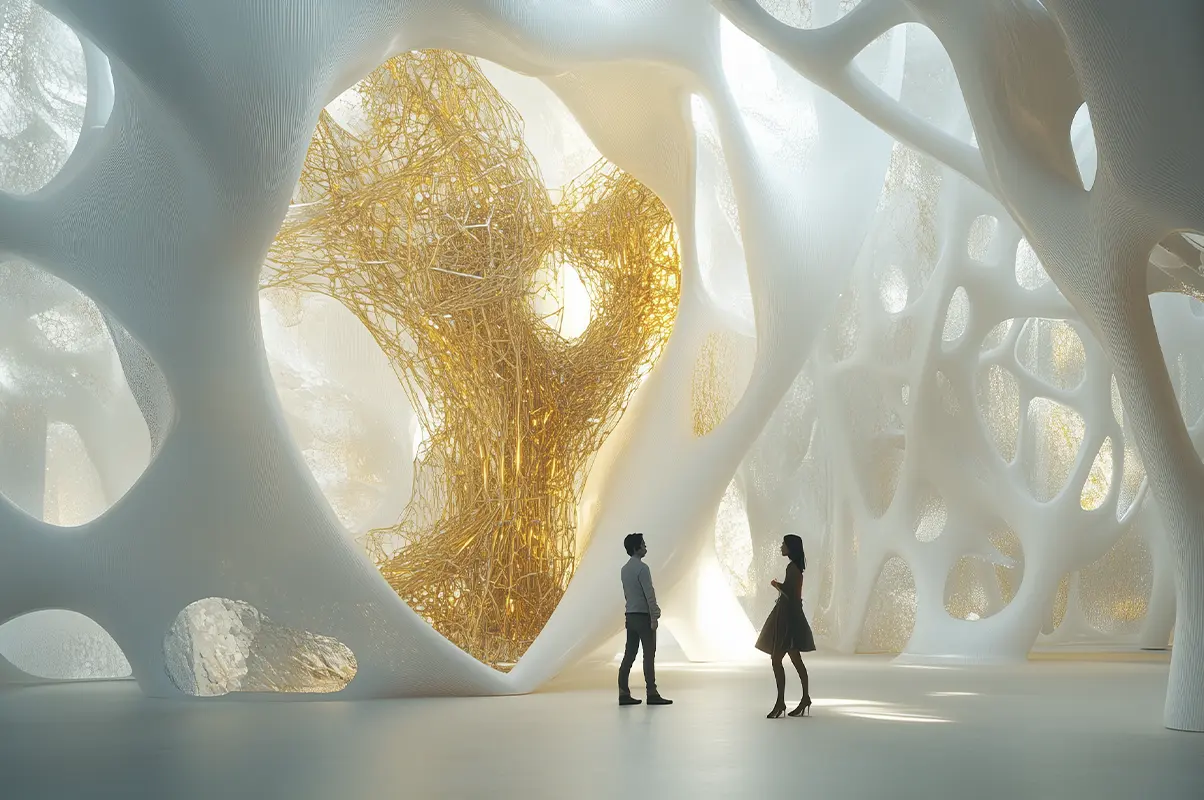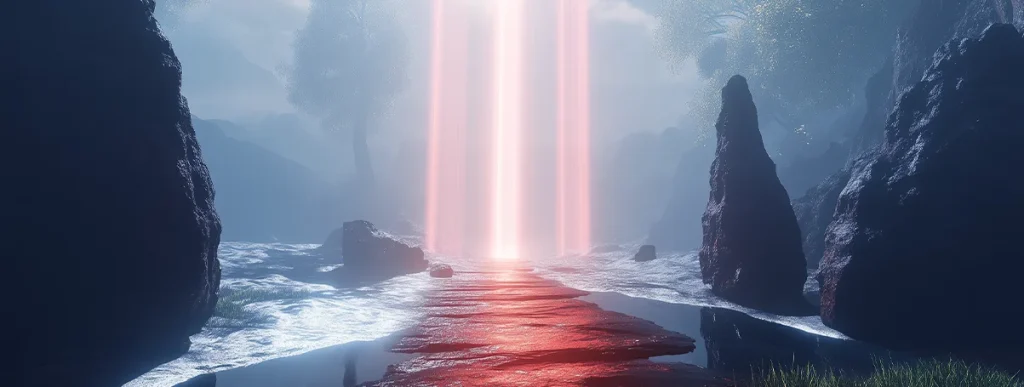Overview
The rise of immersive experiences in the production of both in-person and virtual events – such as art shows, live concerts and interactive museum exhibits – is a well-documented phenomenon. However, the term can be punctuated by a certain vagueness, encompassing many different production practices from audiovisual enhancements to methods of interaction between performers and spectators. This brief overview aims to demystify immersive experiences and make a case for their incorporation into both virtual and in-person events – be it interactive art exhibits, immersive theater shows, or interactive online experiences.
How to define immersive experiences
Put simply, immersive experiences serve to enhance the suspension of disbelief within the spectator of a given event, creating the amazing experience of being transported into another world. Immersivity is the practice of achieving this feeling within spectators via the use of various behind-the-curtain production techniques.
Breaking the fourth wall
Key to this experience is the concept of the “fourth wall” – the physical or imaginary barrier between the spectator and the performer. Immersive experiences, in part, have to do with consciously breaking this barrier, blurring the lines between the real world the spectator inhabits and the imaginary world the performer constructs. If done correctly, this often results in a deeper level of engagement within the audience, as long as the illusion is carefully maintained through a variety of clever tricks of art and technology, elaborated in detail below.
Tricks of the trade
Immersive shows overwhelmingly engage multiple senses within the spectator, from complex lights and visuals and three-dimensional soundscapes to experiences that integrate the sensations of vibration, touch, scent and even taste.
Oftentimes, they opt to involve the audience directly through interactive experiences that let the spectator actively participate in the show in various ways. Some interactive shows, for example, allow the audience to affect the direction of the show via internet-based voting.
Another factor is the use of space – the feeling of immersion is often deepened through environment art and set design. Whether this means using art and technology to create complex, multi-layered sets, or even allowing guests to freely explore and interact with their surroundings, transporting the spectator to another world begins with the making of the world itself.

An additional factor to consider is time – more than a few immersive theater shows have nonlinear narratives. Instead of telling a traditional story with a set beginning and ending, these interactive event experiences let audience memories engage with the pacing on their own terms. In practice, this often entails playing multiple scenes simultaneously at different locations and giving spectators the ability to visit them in any order.
The role of technology in creating immersion
Technological tools play a major role in the creation and enhancement of immersion, whether as a core part of the experience or invisibly, behind the scenes. For example, VR and AR tools serve to directly engage a viewer with a constructed virtual world or add an interactive experience layer to a real-world performance. On the other hand, complex lighting rigs or spatial audio setups work to create subtler examples of immersive experiences, boosting traditional ways of creating immersion within theater – light and sound.
There are a variety of different technological tools that show productions can employ to increase immersion, but the most important tool in the pocket of any creative is going to be intent. It’s certainly tempting to invest in cutting-edge technologies with hopes of providing the best possible experience, but each production is going to have its own needs and idiosyncrasies. At the end of the day, art is communication, and each element of the production needs to come in service of the work’s underlying message.
Case study: Notable immersive interactive experiences and their productions
Let’s take a look at two immersive experiences in the US that employ different tools in order to achieve immersion:
The New York production Sleep No More employs non-linear storytelling by separating its Shakespearean plot into multiple chambers. This immersive show lets the audience walk its multi-floor space to experience scenes in the order they choose, as well as interact with the environment and characters of the production. As a result, each viewer ends up experiencing their own unique version of the performance – all owing to clever writing and innovative production design.
On the other end of the spectrum lies The Void, a Utah-based immersive interactive experience advertising itself as “the most immersive virtual reality destination”. This attraction combines virtual reality and motion-tracking hardware with real-world sets and obstacles in linear scripted adventures of various genres. The end user experience is one where the real world acts as a mere framework, letting audiovisual VR technology provide sensations for the participant, supported by a complex system of trackers and checkpoints.

Reality-blending: physical meets digital
We often think of the physical and the digital worlds as opposites, but it is more useful to think of them as two sides of the same spectrum. Constructing immersive experiences often entails blending the physical with the digital – often shortened with the portmanteau “phygital”. This combination vastly expands design possibilities for show productions, offering more dynamic, personalized, and engaging experiences.
There are several intuitive ways of merging the tangible and the virtual within interactive experiences. One popular method takes advantage of the most widespread digital interfacing tool, readily available to nearly everybody – a smartphone. Physical art and educational spaces, such as museums and galleries, employ this method frequently, utilizing QR codes and companion apps to add an additional layer of information and interactivity to their exhibits. Interactive immersive art installations have become more common as well, offering AR-enabled art objects that compliment, and in some cases, transform the original meaning of the physical artwork.
Projection technology provides an additional method of phygital integration within art spaces. In the last five years, projection-based immersive art attractions have become widespread in the US and worldwide, owing to their versatility and modular nature. These installations employ projection mapping technology to seamlessly transform any event space into an interactive art experience. They range from experimental new media pieces to reimaginings of renowned Impressionist artworks and offer various degrees of interactivity. At their most basic, they take the form of static animated projections, but more advanced art exhibits use complex sensor symptoms to seamlessly respond to user input, such as movement and touch.
teamLab: Continuity, an art exhibit organized by Japanese “ultratechnologist” collective TeamLab at San Francisco’s Asian Art Museum, provides an excellent example of phygital use of space in immersive experience design. Projected visuals transform the 8500 sq.ft. event space into a kaleidoscopic wonderland of flowers and intersecting lines. Neon fish and pastel butterflies circle the viewers, reacting to their movements in real time. Ambient soundscapes echo throughout the space, overlapping as viewers pass from room to room. These factors compound in the dark, minimalist environment to create a sense of borderlessness, total envelopment within the constructed world of the exhibition. Continuity shows how the intersection of physical art and technology, combined with a thoughtful use of space, create an immersive show that transcends the sum of its parts.

Next-gen immersive experiences on the horizon
The above is just one example of how art productions are adopting emerging technologies to create groundbreaking immersive attractions. In the coming years, next-generation tools will offer never-before-seen avenues of exploration and experimentation in new immersive experiences.
Artificial intelligence (AI) is one of these transformative technologies, creating new possibilities when it comes to interactive design. Adaptation based on real-time user input in the form of dynamically changing visuals, sounds, or even narratives in immersive theater shows can lead to individualized experiences that have unique meanings for every participant.
Haptic feedback, a technology simulating tactile interaction, provides another excellent opportunity for creating immersion. Wearable devices such as gloves and body suits enable users to experience texture, temperature, and force within digital environments. This has wide-ranging applications in the field of interactive art experiences– soon, virtual art exhibits that make the digital world feel physically present might be commonplace.
Looking further into the future, neurotechnology provides a fascinating look into the future of immersive experiences, particularly through brain-to-computer interfaces (BCIs). These devices allow users to interact with virtual environments using only their thoughts – a notion with outstanding potential in the field of interactive experience design. Experiences with incredible degrees of interaction, ones where art exhibits adapt to the users’ conscious thought and subconscious emotions, may well be a possibility in the near future.
Though these and other fascinating technologies offer tremendous potential, as they advance, sustainability remains a key focus. The implementation of new technologies must be supplemented with the use of eco-friendly materials, energy-efficient solutions for power consumption, and the minimization of waste. Though less glamorous than virtual reality and thought interfaces, environmental responsibility must be carefully considered in immersive experience design. This ensures that the excitement of new technologies doesn’t come at the expense of the planet.
As these technologies and production practices gain popularity, immersive experience events are becoming more globally widespread. The democratization of these tools is making them more affordable and accessible than ever, allowing creators worldwide to apply their own cultural influences to the art form. As more diverse audiences engage in immersive experiences, we come closer to a future where such experiences are not limited by geography or cost – only by human creativity.



